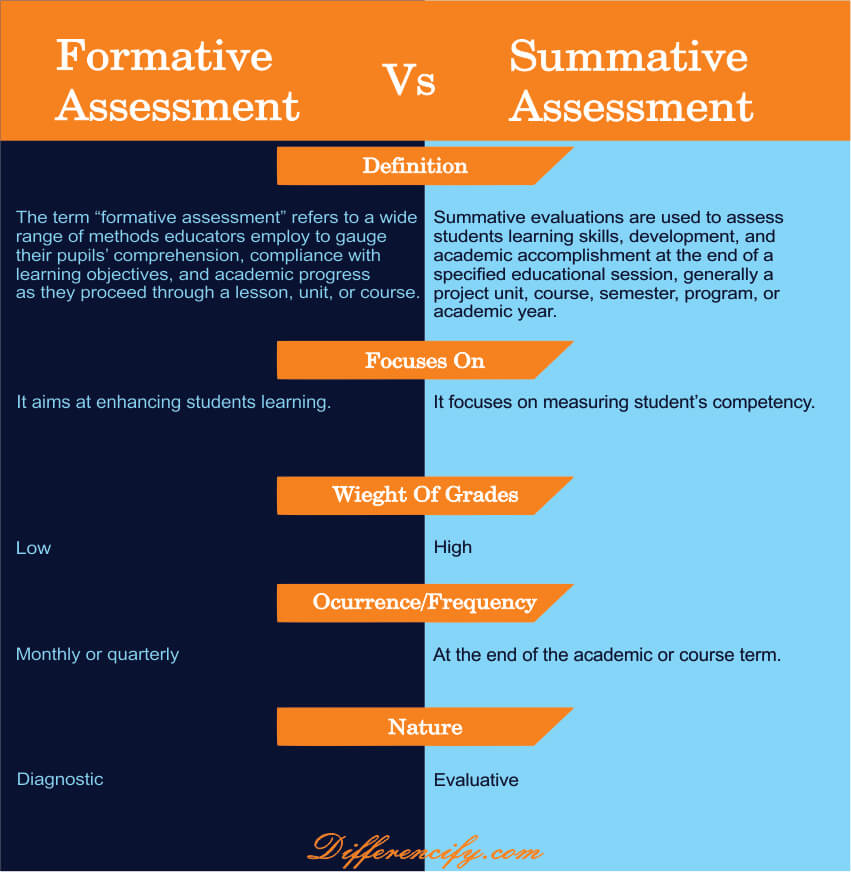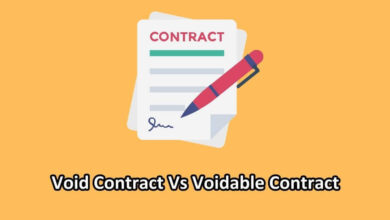Assessments are a common tool used in education to measure student progress and achievement. In this article, there are two types of assessment types which I would like to highlight.
Formative assessment is a process of student feedback given frequently, in which the teacher provides continuous feedback to students so that they can identify areas for improvement in their work. Summative assessment is a process of evaluating a student’s progress at the end of an instructional unit, usually consisting of some type of test. The following topics will help us understand the core difference between both these terms.
What Is Formative Assessment?
Formative assessment is a form of assessment that is used to monitor student learning and progress. It is usually ongoing and informal and can be used to adjust instruction as needed. Formative assessment can take many different forms, including quizzes, exit slips, journaling, or other tasks assigned by the teacher.
Formative assessment is most commonly used in the classroom setting to monitor student learning and progress. It can be used to adjust instruction as needed and to provide feedback to students about their performance. Formative assessment can also be used to assess student understanding of content, concepts, and skills. Moreover, formative assessment helps both students and teachers to identify areas of strengths and weaknesses so that students can be better supported.
What Is Summative Assessment?
Summative assessment, on the other hand, is a form of assessment that is used to evaluate student learning at the end of a unit or course. It is usually more formal than formative assessment and can take the form of a test, final project, or presentation. It is important to note that summative assessment should not be used as the only form of assessment, as it does not provide students with the opportunity to improve their learning.
In addition, summative assessment seek to judge student performance against some predetermined standards.
Types of Summative Assessment
There are a variety of different types of summative assessment, but some common examples include:
- Tests (multiple choice, essay, short answer, etc.)
- Final projects
- Presentations
- Performance tasks
Formative Vs Summative Assessment – Main Difference
Both formative and summative assessments aim to measure student learning, but they do so in different ways.
Formative Assessment is an ongoing process where the goal is to provide instantaneous feedback that can be used by the teacher to modify lesson content or teaching strategy. It is often used in conjunction with instruction and is designed to provide feedback that can be used to improve future performance. Summative assessment, on the other hand, occurs at the end of a unit or course and is used to evaluate student learning.
The main difference between formative and summative assessments is their purpose. Formative assessment is used to help students learn, while summative assessment is used to measure student learning. Because of this, formative assessments are usually more informal than summative assessments. They may take the form of questions asked during class or practice assignments. Summative assessments are often more formal, such as tests or final projects.
Comparison Table

Key Differences Between Formative And Summative Assessment
There are several key differences between formative and summative assessment, which are outlined in the table below.
- Formative assessment is ongoing throughout the learning process and is primarily used for the purpose of guiding instructional decisions. On the other hand, summative assessment generally occurs at the end of a learning unit or experience and provides data that can be used to measure student achievement relative to predetermined standards.
- Formative assessment is ongoing throughout the learning process. On the other hand, summative assessment generally occurs at the end of a learning unit or experience.
- While formative assessment is primarily used for the purpose of guiding instructional decisions, summative assessment provides data that can be used to measure student achievement relative to predetermined standards
- Summative assessments are often high-stakes tests that have significant consequences for students. On the contrary, formative assessments do not typically have such consequences.
- While formative assessments can be given individually or in small groups as needed, summative assessments are usually given to all students in a class at the same time.
- Summative assessments often require more time and resources to administer than formative assessments.
- The results of summative assessments are often used to make decisions about grades, promotion, and course credit, while the results of formative assessments are typically used to inform instruction and improve student learning.
- Finally, summative assessments are typically more formal in nature than formative assessments.
Conclusion
So, in conclusion, formative and summative assessments are two different types of assessments that serve different purposes. Formative assessment is used to monitor student progress and provide feedback so that students can improve their learning. Summative assessment, on the other hand, is used to evaluate student learning at the end of a unit or course.
Both formative and summative assessment have their own advantages and disadvantages, so it’s important to choose the right type of assessment for your needs. Formative assessments can be used to gauge student understanding and identify areas that need further work. Summative assessments can be used to determine whether students have met the learning goals for a unit or course.




4 Comments